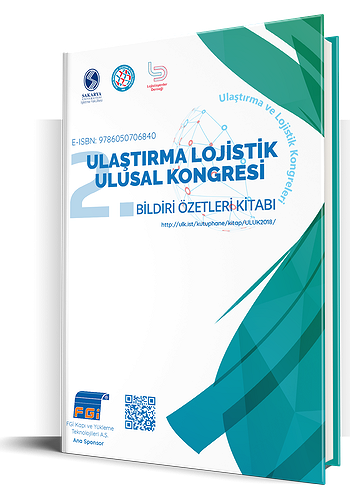
Ulaştırma ve Lojistik Kongreleri
- English
- Özet
- 2018
Loading and Routing Optimization System for a Local Market Chain
Benhür Satır
Dr. Öğr. Üyesi, Çankaya Üniversitesi, Ankara, Türkiye
Selçuk Yılmaz
Merck Sharp & Dohme Corp, İstanbul, Türkiye
The aim of this project is to reduce the distribution cost of local supermarket chain while improving the loading efficiency of trucks used in distribution from central warehouse to the stores.
The problem is basically a Capacitated Vehicle Routing Problem (CVRP) and is a member of NP-Hard problems. Toth and Vigo (2002) state that optimal algorithms may be used for at most 50 delivery locations. Heuristic solution approaches, such as Gendreau et.al. (1994) that uses a tabu heuristic for CVRP, exist in literature. We simply the problem by ignoring pre-loading of store orders (that are put in to pallets and rollouts). Instead, we assume store orders are available in terms of pallets and rollouts, which result in 2-dimensional loading problem of those carriers to trucks. Besides, we will visualize the outcomes using business intelligence tools to support decision-making process.
In this study, we developed R code and testing it in a small size problem after the solution declared we transferred the solution into DSS system (Power BI). During this study, we investigate the ordering process and daily workflow in central warehouse and analyze the current system to develop loading and vehicle routing model. Loading model is mathematical model that makes feasible loading which includes assignment of branches to trucks. Routing model optimizes routes afterwards.
After the investigation on the problem environment main contributors have been identified and we create relational database, distance matrix, location of stores and all parameters gathered in this relational database. Our code directly read the information in this database and Power BI reflect the results via interactive dashboards.
Our code has the ability to solve loading and routing problems, by improving our code and DSS, real life problem can be easily solved. R has the flexibility get the data from every source also Power Bı has the same ability. In real life companies works and keep their data in servers. Our code can be easily modified the get data from servers and power bı synchronizing the data instantly. This study is made for a local supermarket chain to evaluate loading and routing alternatives before truck dispatches. Since the problem size is small, we evaluate all alternatives, i.e., we make total enumeration. Therefore optimal solution is found for sure. R Software and Power BI are used simultaneously to present alternatives to the decision maker. We use dashboards of routes on map, total distance and total fuel consumption. By the help of these dashboards, decision maker can easily asses alternatives.
To solve defined problem, we created algorithm that we followed. Algorithm has three main stages. After the algorithm applied with success we are transferring the result to Power BI platform to visualize and giving access to the users. To reduce the problem size and to check algorithm we assume 4 store has urgent order and 2 vehicles are available. Normally there is a 61 stores and 9 vehicles with different capacities.
First step considers largest vehicle and store orders as ascending. An upper bound for number of stores that can be loaded to any truck is found and this is used to accelerate the algorithm. Second step makes all store-truck allocations. Third step calculates total distances for all routing orders for trucks considering store assignments.
Keywords: Decision Support System, Vehicle Routing, Distribution, Business Intelligence, Power BI Platform


Bu çalışma, kullanan kişilere orjinal çalışmadan alıntı yaptıkları sürece, çalışmayı dağıtma, değiştirme ve üzerine çalışma hakkı tanıyan Attribution 4.0 International (CC BY 4.0) lisansı ile lisanslanmıştır.
İletişim
İstanbul Üniversitesi Ulaştırma ve Lojistik Fakültesi
İ.Ü. Avcılar Kampüsü 34320 Avcılar/İstanbul
ulk@istanbul.edu.tr
+ 90 (212) 440 00 00 - 19200


